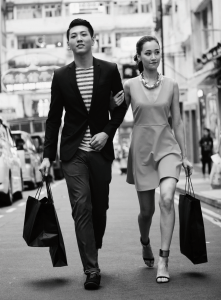
A marked change in consumer mentality has been seen in the years following the Great Recession. Shoppers – both young and old – are seeking value and quality in whatever they buy. That trend has especially been felt in the outlet industry, causing developers and owners to take notice. A flurry of new outlet development can be seen – from traditional outlet centers, to mixed-use, urban locations and mall redevelopment.Gone are the days when outlets were located in sparsely populated cities between metropolitan areas, and predominantly visited by those on dedicated shopping trips.
Outlet developments today are moving towards the suburbs of cities and attracting the millennial consumer – mixing the bargain soft goods-centric approach to include food and entertainment offerings, as well as hybrid merchandising with full price and fast fashion co-tenancy. As entertainment continues to increase in relevance for outlet centers, projects adjacent to entertainment facilities have grown in popularity.
The outlet projects will be more hybrid, particularly the ones that are in urban environments. Adding additional elements like experiential entertainment and dining options is proving to be beneficial for outlet centers – it turns them into places that can be frequented more often because there’s more at the center than just shopping. With the diversity of things to do, it’s more appealing to a larger group of people or an entire family, so you can make more of an outing to it.
As an industry, the outlet centres benefited so much from the economic downturn. It brought so many new consumers that had never shopped at an outlet center before. But now those shoppers want outlets close by. Where traditional retail might be rolling back, outlets are rolling in. It definitely seems to be more and more part of the overall mix that you don’t have to expect to drive 30 to 45 minutes to get to the closest outlet center – particularly if you live in a major metropolitan market.”
The move towards cities has a lot to do with the living and shopping preference of millennials. Millennials are the fastest growing group of outlet shoppers. They have embraced the concept of brands and value, and they often don’t have cars and don’t want to travel to exurban sites for anything. Millennials are much more drawn to centers that they can access readily with public transportation. That’s another flavor that’s been seeing in outlets as millennials become a more significant customer. Millennials are also driving a change in the way outlet products are researched and purchased. – The millennials are just more sophisticated in understanding pricing.
Another trend in outlet retail is a switch-up with regard to tenants. As the economy continues to improve, high-end retailers have begun to question their prevalence in the outlet sector. It’s a little challenging right now in the outlet world; a lot of retailers that were hot and heavy in the outlet market a few years ago have really cut back.Some of the higher end tenants have decided that outlets are not good for their brand so they’ve rolled back from these centres. The management of these centres has to find new opportunities or solutions to keep the high end brands in their centres.
Some of the legacy brands are having trouble and they’re trying to figure themselves out – whether it’s from an operational standpoint or a design standpoint. Fast fashion retailers like H&M and Forever 21 are really making a push into the outlet centers. As the millennials become a very important part of the retail consumer world, being able to have cost-conscious, fashion forward brands and apparel is really where a lot of the industry going.
Conclusion:
Creating a fully hybrid offer that blends outlet with leisure, F&B and full price retail is the next step in attracting a wider range of visitors, increasing sales and ultimately turnover and profit. We see further scope for outlet centre development in more urban settings, working in harmony with other forms of retail and leisure.”


